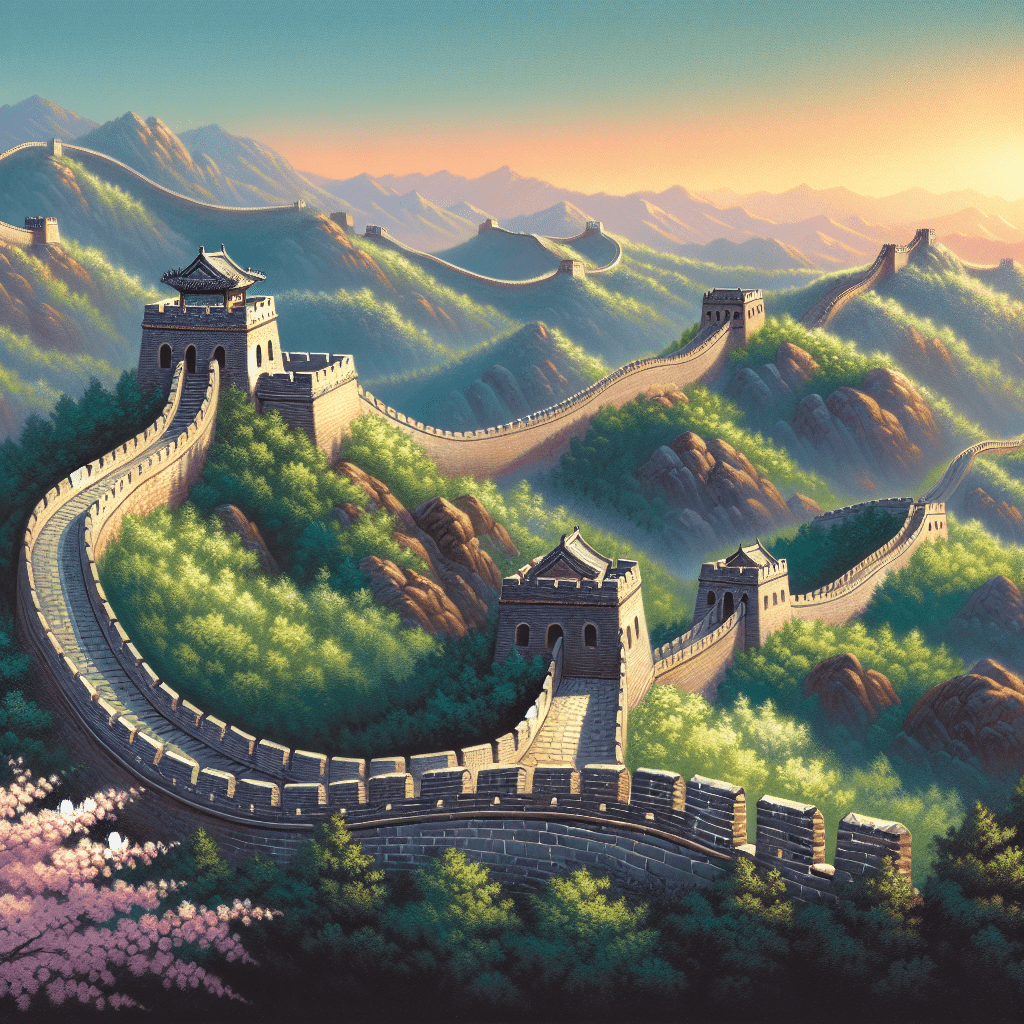
Great Wall of China
The Great Wall of China: An Iconic Landmark with a Rich History
The Great Wall of China is perhaps one of the most iconic landmarks in the world. Stretching over 13,000 miles, it is the longest wall ever built and is considered one of the most impressive architectural feats in history. Not only is it a marvel of engineering, but it also holds a rich history that dates back over 2,000 years.
Construction of the Great Wall began in the 7th century BC, during the Warring States period in China. The wall was initially built by various independent states as a means of protecting their borders from invasions by rival states. It was not until the Qin Dynasty (221-206 BC) that the wall was unified and extended to what we see today. Emperor Qin Shi Huang, who unified China and is best known for the Terracotta Army, ordered the construction of the Great Wall as a means of fortifying the borders of his empire.
During the Ming Dynasty (1368-1644), the wall was further expanded and strengthened. The Ming Dynasty is credited with building the majority of the Great Wall that we see today. The wall was constructed using a variety of materials, including bricks, stone, and wood. Watchtowers, beacon towers, and fortresses were also added along the wall to provide additional defense against potential invaders.
One of the most unique features of the Great Wall is its ability to adapt to the natural terrain. The wall winds its way through mountains, valleys, and deserts, adapting to the natural landscape in a way that is both functional and aesthetically pleasing. The wall is also set at different elevations, with some sections rising to over 2,000 feet above sea level.
Despite its impressive size and strength, the Great Wall was not always successful in keeping out invaders. In fact, it is estimated that the wall was breached multiple times throughout its history by various nomadic tribes and armies. However, the wall served as a powerful symbol of China’s strength and determination to protect its borders. It also served as a means of communication, with beacon fires being lit along the wall to warn of impending invasions.
In addition to its military significance, the Great Wall holds a cultural and symbolic importance for the Chinese people. It is a symbol of China’s long history and enduring civilization. It has also become a symbol of unity and strength, representing the unification of the Chinese people in the face of adversity.
Today, the Great Wall of China is one of the most popular tourist attractions in the world. Millions of visitors from around the globe come to marvel at its sheer size and beauty. The wall is divided into sections, with some sections being more tourist-friendly than others. The most visited section of the wall is the Badaling section, which is located near Beijing and is easily accessible from the city.
Other popular sections of the wall include Mutianyu, Jinshanling, and Simatai. Each section offers its own unique views and experiences, with some sections being more challenging to navigate than others. Visitors can choose to hike along the wall, take a cable car ride, or even take a helicopter tour for a bird’s eye view of this magnificent structure.
In recent years, efforts have been made to preserve and restore the Great Wall. Many sections of the wall have been damaged by erosion, weathering, and human interference. Conservation efforts are ongoing to ensure that this iconic landmark remains intact for future generations to enjoy.
The Great Wall of China is not just a physical structure, but a symbol of China’s rich history, culture, and resilience. It stands as a testament to the ingenuity and determination of the Chinese people and serves as a reminder of the enduring legacy of one of the world’s oldest civilizations. To walk along the Great Wall is to walk through history itself, and to witness firsthand the greatness of one of mankind’s most impressive achievements.
